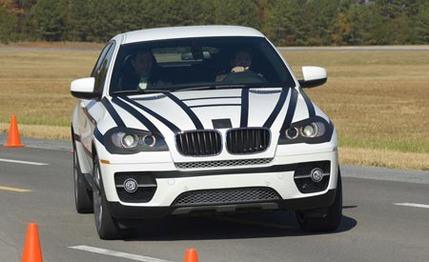 First Drive Review
First Drive Review
BMW rarely wastes time creating concept vehicles with no production future, and that applies to the X6. Unveiled at September's Frankfurt auto show, this swoopy four-door was a no-kidding portent of a vehicle that will actually show up in BMW showrooms. And soon.
We can say this with absolute certainty, having just come from the Michelin proving ground near Laurens, South Carolina, where we drove several X6 development mules.
Details—engine specs, curb weights, dimensions, pricing—were extremely sketchy. But here's what we know:
1. Essentially a hefty car with lots of ground clearance, the X6 is conceived to be a sexier version of the X5, compromising utility (four passengers rather than five, less rear headroom, less cargo space) in favor of style and sportier dynamics. BMW plans to emphasize the distinction by referring to the X6 as a coupe, ignoring the semantic inconvenience of four doors.
2. Although the basic architecture is X5—the X5 and the X6 will both be built in South Carolina—and the wheelbase (115.5 inches) is unchanged, the X6 will have a slightly wider track, slightly greater length overall, and dedicated sheetmetal. About the only cosmetic element that seems to be shared is the twin-kidney grille.
3. The X6 will serve as the introductory vehicle for a new technology BMW calls Dynamic Performace Control (DPC) which is a further development of the company's xDrive all-wheel-drive system. Similar in concept to Acura's Super Handling All-Wheel Drive (SH-AWD), DPC apportions engagement of the rear wheels from side to side based on need, and like the Acura system, it can rotate the outside wheel faster than the inside wheel in hard cornering, thus improving cornering speed.
Unlike the Acura system, need is determined on the basis of yaw instead of wheelspin, and DPC operates by clutches, so engagement is constant rather than throttle-dependent. Together with BMW's various stability and traction control systems, DPC seems to make the X6 exceptionally stable on low-adhesion surfaces and also seems to give the vehicle nearly neutral handling, although understeer will prevail at the limit.